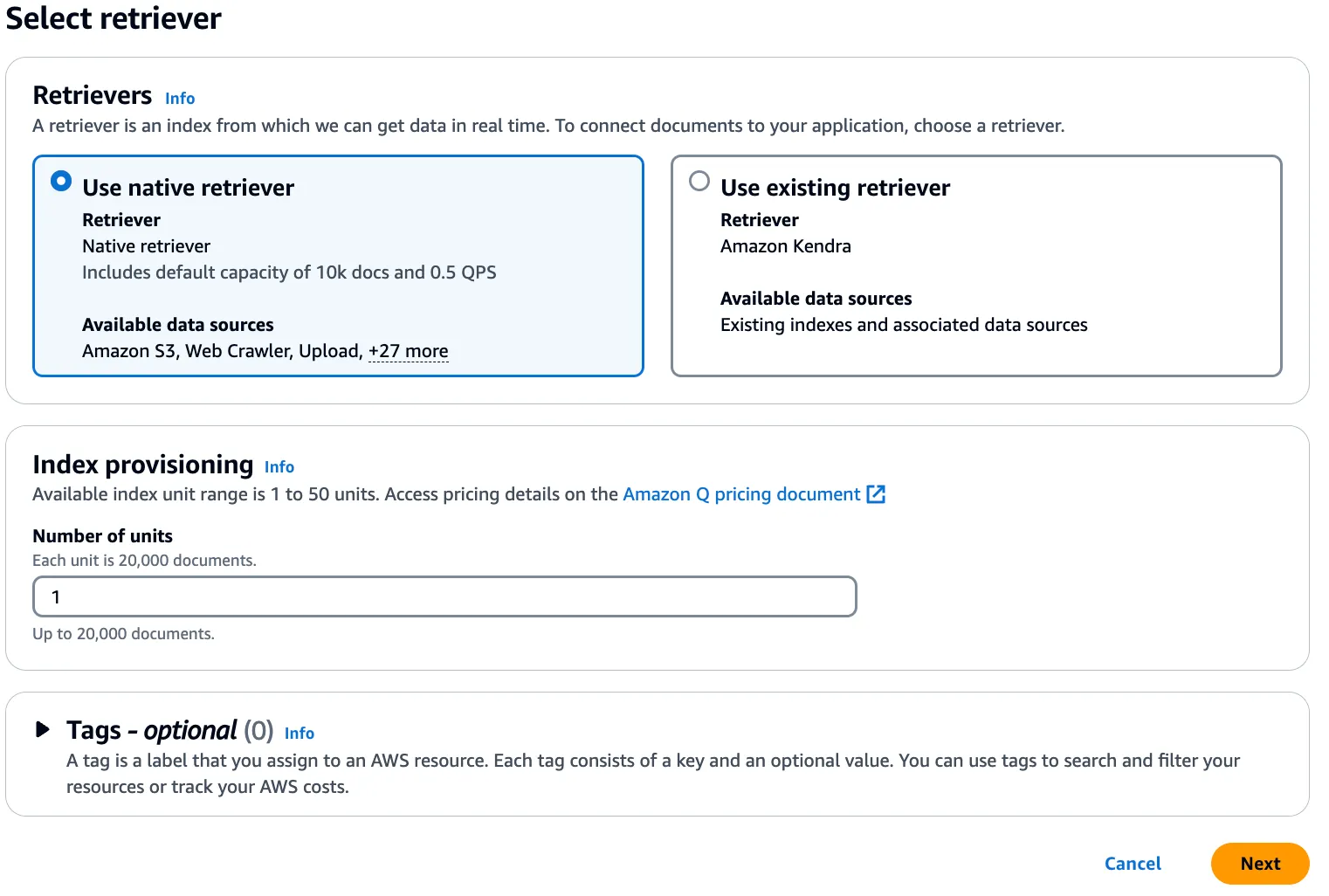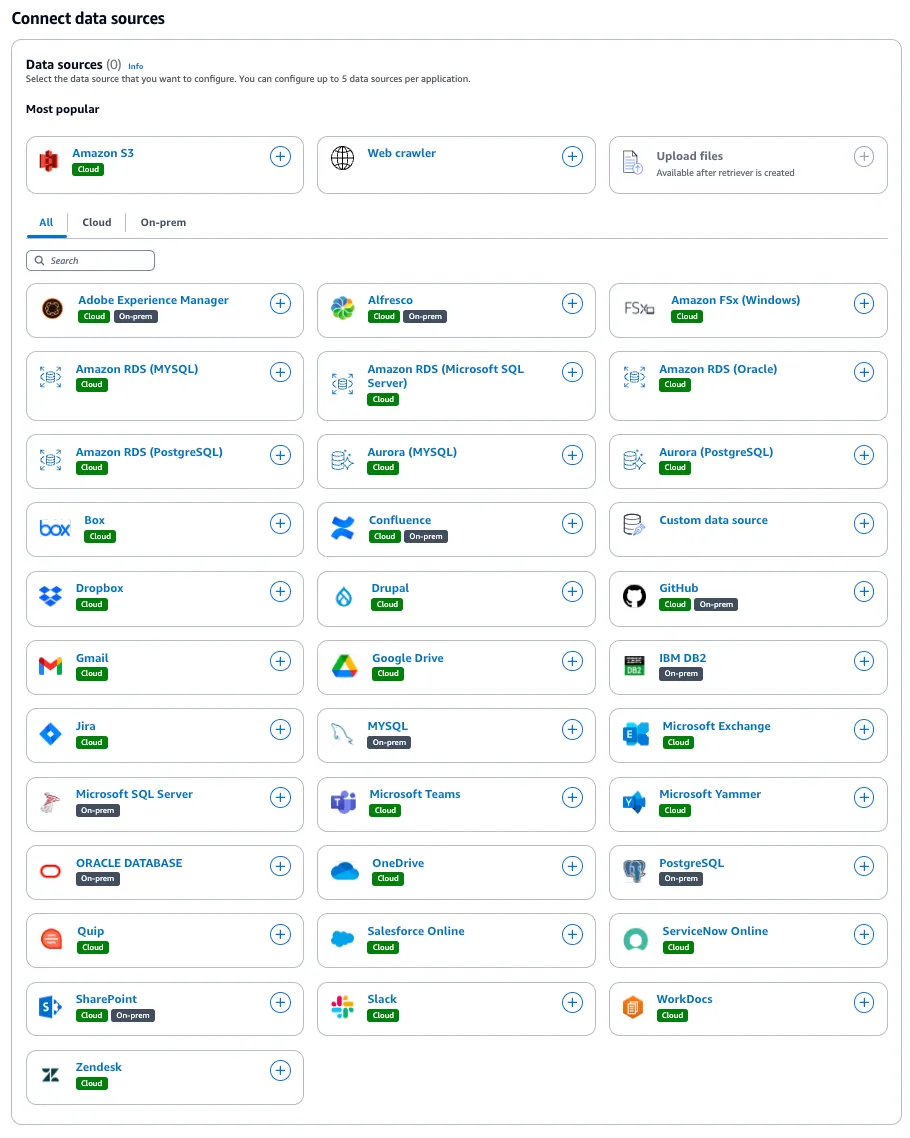Build a contextual chatbot application using Amazon Q for Financial Services.
Discover how to leverage Amazon Q to build a powerful contextual chatbot for financial services, enhancing customer engagement and support.
- Sign in to the AWS Management Console and open the Amazon Q console at https://console.aws.amazon.com/amazonq/.
- For Create Amazon Q application, choose Get started.

Amazon Q - For Applications, choose Create application.

Applications page
- For Application settings, enter the following information for your Amazon Q application:
- Application name – A name for your Amazon Q application for easy identification.
- Service access – An IAM role for Amazon Q to allow it to access the AWS resources it needs to create your application. You can choose to use an existing role or create a new role.
- Service role name – A name for the service (IAM) role you created for easy identification on the console.
- Encryption – Amazon Q encrypts your data by default using AWS managed AWS KMS keys. To customize your encryption settings, select Customize encryption settings (advanced). Then, you can choose to use an existing AWS KMS key or create a new one.
- Tags – optional – To add tags to your Amazon Q application and web experience, select Add new tag. Then, enter the following information for each tag:
- Key – Add a key for your tag.
- Value - optional – An optional value for your tag.
- To start creating your application, choose Create.

create application


- Name – Name your data source for easy tracking.
- Configure VPC and security group – optional – You can choose to use a VPC if your Amazon S3 bucket is not accessible through the public internet. If you so, you must add Subnets and VPC security groups as well.
- IAM role – Choose an existing IAM role or create an IAM role to access your repository credentials and index content.
- Sync scope, enter the following information:
- Enter the data source location – The path to the Amazon S3 bucket where your data is stored. Select Browse S3 to find and choose your bucket.
- Maximum file size - optional – The maximum file size value that Amazon Q will crawl. Amazon Q will only crawl files within the limit you define.
- Advanced settings, enter the following information:
- Metadata files prefix folder location - optional – The path to the folder in which your metadata is stored. Select Browse S3 to locate your metadata folder.
- Access control list configuration file location - optional – The path to the location of a file containing a JSON structure that specifies access settings for the files stored in your S3 data source. Select Browse S3 to locate your ACL file.
- Regex patterns – Add patterns to include or exclude documents from your index. All paths are relative to the data source location Amazon S3 bucket. You can add up to 100 patterns.

s3 configuration
- Sync mode, choose how you want to update your index when your data source content changes. When you sync your data source with Amazon Q for the first time, all content is synced by default.
- Full sync – Sync all content regardless of the previous sync status.
- New, modified, or deleted content sync – Sync only new, modified, and deleted documents.
- In Sync run schedule, for Frequency – Choose how often Amazon Q will sync with your data source.
- Tags - optional – Add tags to search and filter your resources or track your AWS costs.
- Field mappings – A list of data source document attributes to map to your index fields. Add the fields from the Data source details page after you finish adding your data source. You can choose from two types of fields:
- Default – Automatically created by Amazon Q on your behalf based on common fields in your data source. You can't edit these.
- Custom – Automatically created by Amazon Q on your behalf based on common fields in your data source. You can edit these. You can also create and add new custom fields.
- To finish connecting your data source to Amazon Q, select Add data source.




